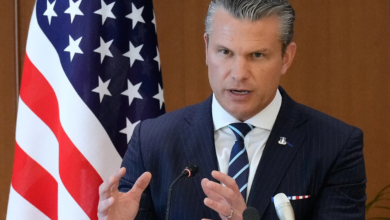The coronavirus arrived in Latin America
It was brought by a 61-year-old Brazilian who arrived in Brazil after being in Italy for two weeks

Woman under a blanket coughing. / Photo: Freepik
LatinAmerican Post | Marcela Peñaloza
Listen to this article
Leer en español: El coronavirus llegó a Latinoamérica
The Brazilian authorities announced that they identified the first case of coronavirus, Covid-19, in Latin America. The patient is a 61-year-old man who stayed for two weeks in northern Italy, specifically in Lombardy. It is important to remember that Italy has decreed quarantine in several cities and has canceled various events, such as Series A matches and the Carnival of Venice , due to the rapid spread of the coronavirus. According to La Vanguardia, so far Italy has registered 320 infected and 11 deaths.
Brazil was waiting for a second test to verify the diagnosis and yesterday, February 26, the authorities confirmed that in fact the man contracted the virus. The exams taken at first were considered preliminary. These were carried out at the Albert Einstein Hospital, where the patient is being held. The Adolfo Lutz Institute was responsible for checking the first results and confirming the first case of coronavirus in Latin America.
Read also: The threat of the coronavirus is increasing
According to EFE, 154 cases have been investigated in Brazil. However, 51 were discarded and 102 were ruled out because they did not comply with what was specified by WHO as Covid-19.
The coronavirus and Latin America
So far, the region had not detected any cases of the deadly virus. The case of the Brazilian man adds to the concern in countries like Colombia, where 13 citizens evacuated from China will arrive. The government of Iván Duque has stated, through the Ministry of Health and the Ministry of Foreign Affairs, that all security measures have been taken to prevent the virus from reaching coffee country grounds.
For example, Colombians will not be able to board the Colombian Aerial Force (FAC) plane if it is detected that they have any symptoms related to the virus. A commission of Chinese doctors will assess whether the evacuees are healthy and subsequently the mission of Colombian doctors will also carry out a verification process.
Also read: Coronavirus has infected more men than women, why?
Before confirming the case in Brazil, the Latin American region and the Caribbean, with Africa, were the only regions in the world where no cases had been registered. According to PAHO, this is because these regions do not have large commercial, economic and tourism relations with China. However, the Los Angeles Times highlights that the fact that there have been no confirmed cases does not mean that they are safe from infection. Rumors have circulated that the weather would be a protective shield. However, Jarbas Barbosa, deputy director of PAHO, in statements to The Associated Press said that "No country is protected by the weather or anything else."
The confirmation of the first patient in Brazil makes it clear that the Latin American region is not immune to the virus. The question that arises, then, is whether the health system of Latin America and the Caribbean, as well as that of Africa, are prepared to face the contagion of Covid-19. Additionally, the protocols that will be activated should a case be confirmed to avoid spreading the virus are questioned.




